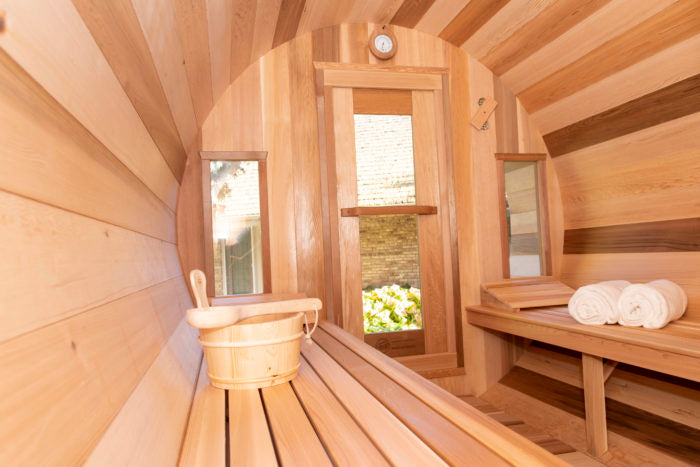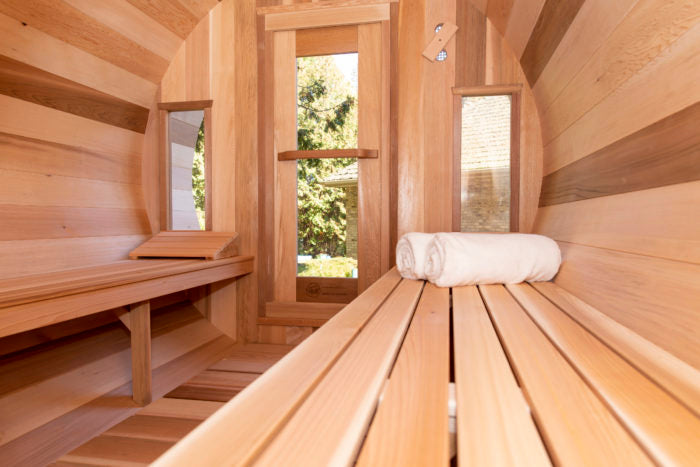Get This Report about Traditional Sauna
Get This Report about Traditional Sauna
Blog Article
Getting My Traditional Sauna To Work
Table of ContentsEverything about Traditional SaunaTraditional Sauna - TruthsTraditional Sauna Can Be Fun For AnyoneThe 9-Second Trick For Traditional SaunaUnknown Facts About Traditional Sauna
Energy cost savings is something to think about for people who intend on utilizing their sauna regularly. For a traditional sauna, bathers typically require to wait on 30-40 minutes for the room to preheat before going into. Infrared saunas, on the various other hand, typically reach their ideal temperature level in about 15 mins.That means that in an infrared sauna, bathers can start appreciating their sauna quickly. One difference in between the 2 types of sauna that is often forgotten is the social experience.

Getting The Traditional Sauna To Work

Attempt a sauna today and uncover some of the incredible advantages on your own!.

Aspects such as warm resistance, wanted level of detoxing, and overall health and wellness ought to be considered when choosing which type of sauna to utilize. Infrared saunas are a sort of sauna that use infrared light to warm the body straight, instead of heating up the air around the body like typical saunas.
Traditional Sauna Fundamentals Explained
The temperature in an infrared sauna is normally reduced than in a traditional sauna, with temperature levels ranging from 120F to 150F. Infrared saunas supply a series of advantages that make them an attractive option for those looking to boost their wellness and health and wellbeing. Some of the benefits of infrared saunas consist of: Infrared saunas make use of lower temperature levels than conventional saunas, which can make them extra comfy for those that locate heats challenging to tolerate.
Infrared saunas have been revealed to assist the body get rid of toxins through sweating. Sweating can also help to enhance skin health and wellness by eliminating pollutants and dead skin cells.
The warmth generated by infrared saunas can help to enhance blood circulation and boost flow. This can help to reduce inflammation, promote healing, and enhance total cardiovascular health. this Infrared saunas have actually been shown to help in reducing tension and advertise leisure. This can assist to improve state of mind, minimize anxiety, and enhance total mental health and wellness.
With their lower temperatures, deep penetration, and variety of health benefits, infrared saunas are a great way to loosen up, unwind, and enhance your total health. Typical completely dry saunas have been around for centuries and are still popular today. They are normally heated up with wood, gas, or electrical energy and have low moisture levels.
Facts About Traditional Sauna Uncovered
There are numerous advantages to using a typical dry sauna. Here are a couple of: Leisure: The high temperature level and reduced moisture in standard completely dry saunas can aid unwind the muscle mass and reduce stress and anxiety levels. Cleansing: Sweating in a sauna can aid get rid of toxic substances from the body, which can boost total health.
When it involves saunas, there are two major kinds of home heating techniques: conventional and infrared. Standard saunas utilize warmed air to heat the body, while infrared saunas use infrared radiation to penetrate the skin and warm the body from within. One of the main distinctions between the 2 methods is the sort of heat they generate.
Traditional saunas heat the air, which then warms the body with convection. Infrared saunas, on the various other hand, warmth the body directly via radiation.
In terms of energy effectiveness, infrared saunas are generally much more efficient than standard saunas since they require much less power to run. They additionally heat up quicker, so they can be utilized for shorter sessions. Traditional Sauna. When it comes to the results on the body, both kinds of saunas have actually been revealed to have advantages
The 6-Minute Rule for Traditional Sauna
Infrared saunas have actually been shown to have similar benefits, along with possibly aiding with detoxification, skin health, and immune function. Overall, the choice in between a typical or infrared sauna comes down to personal preference and individual needs. Conventional saunas may be much better for those who like greater temperature levels and an extra intense sweat response, while infrared saunas might be better for those that desire a more mild and effective warmth treatment.
Both sorts of next page saunas use one-of-a-kind advantages and drawbacks that ought to be thought about prior to choosing. The choice in between an infrared sauna and a typical dry sauna largely depends upon individual choice and the wanted advantages. Those that like an even more comfy, reduced temperature level atmosphere may choose an infrared sauna, while those that are trying to find intense warmth and a standard sauna experience might prefer a typical completely dry sauna.
Below are some safety ideas to remember when using infrared and conventional completely dry saunas:: Saunas can cause too much sweating, bring about dehydration. It is essential to drink lots of water in the past, throughout, and after sauna sessions to stay hydrated.: It useful link is advised to restrict sauna sessions to 20-30 minutes to prevent overheating and dehydration.
Report this page